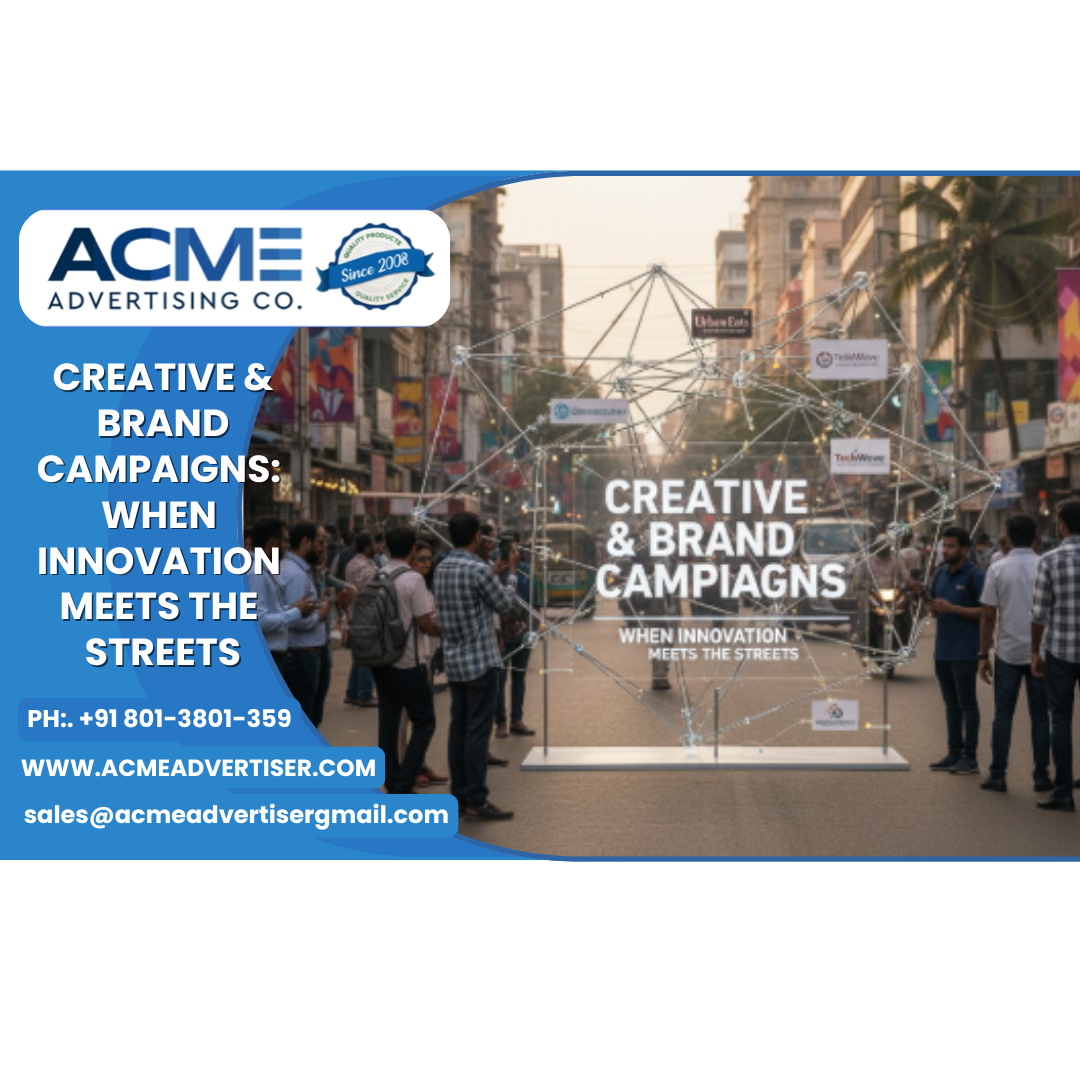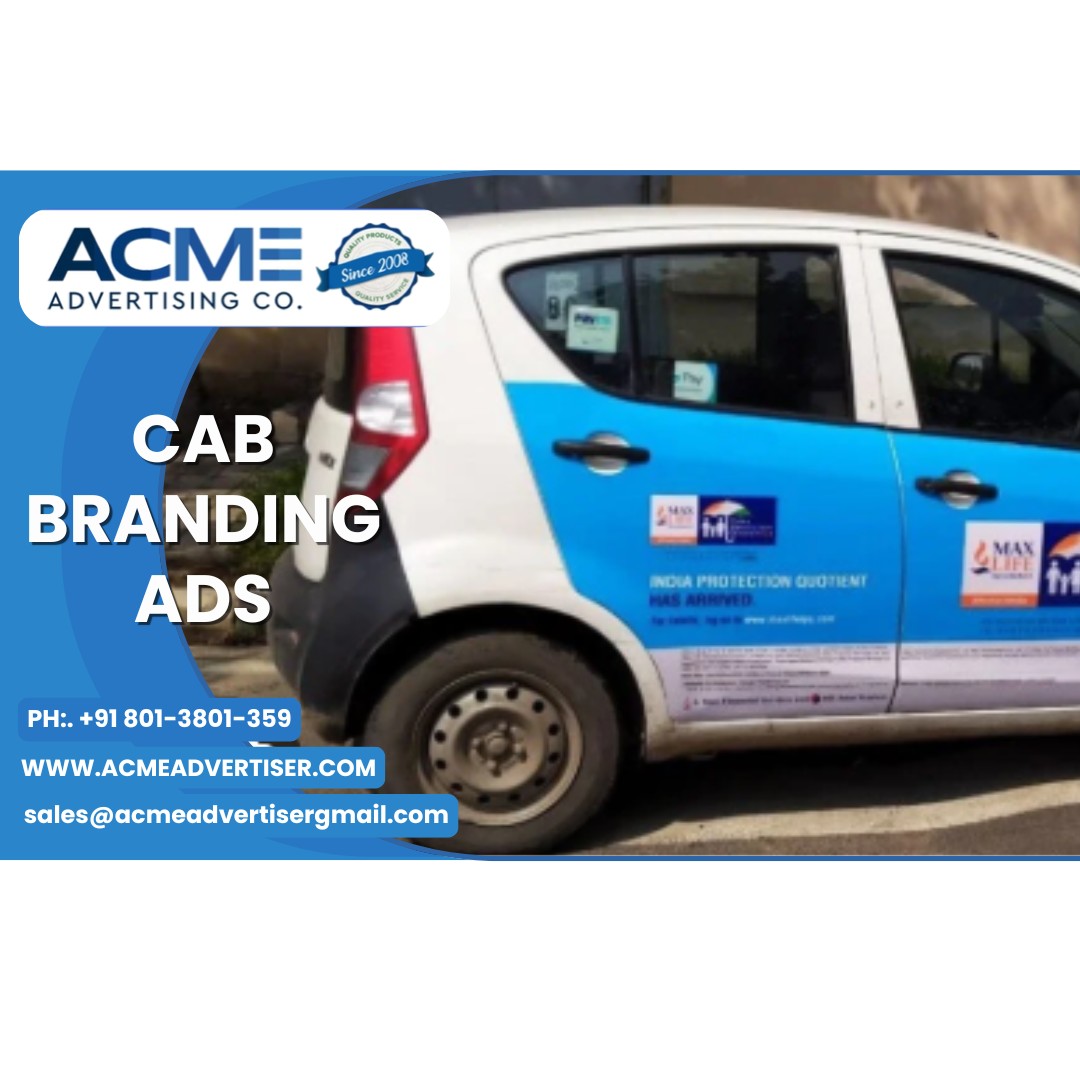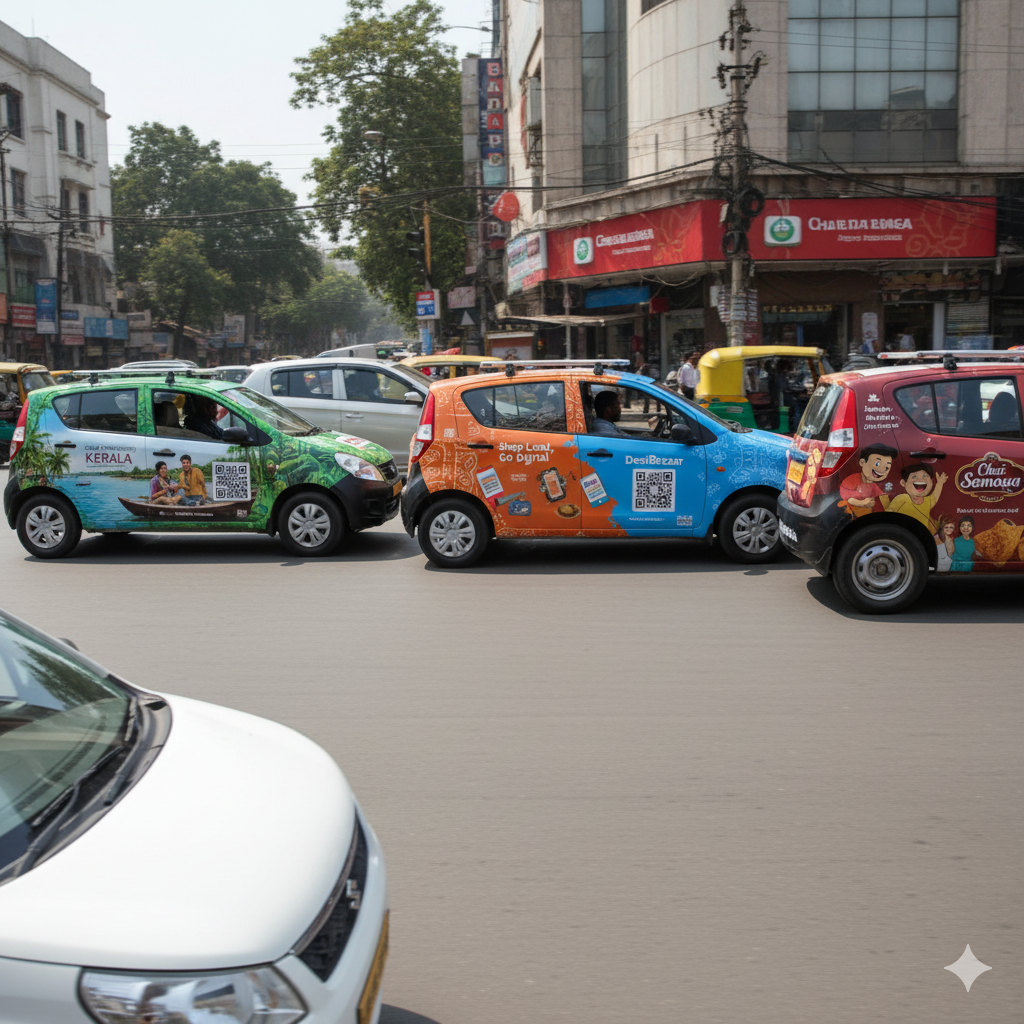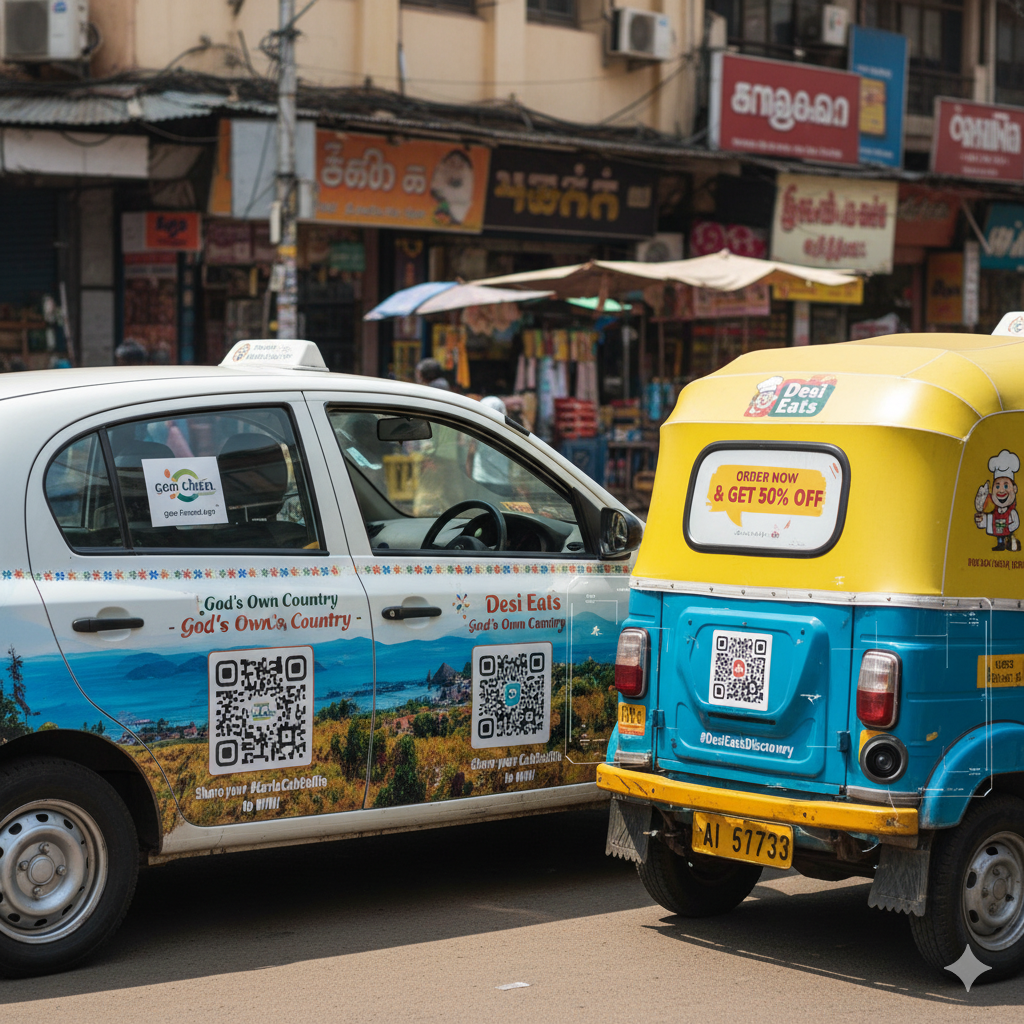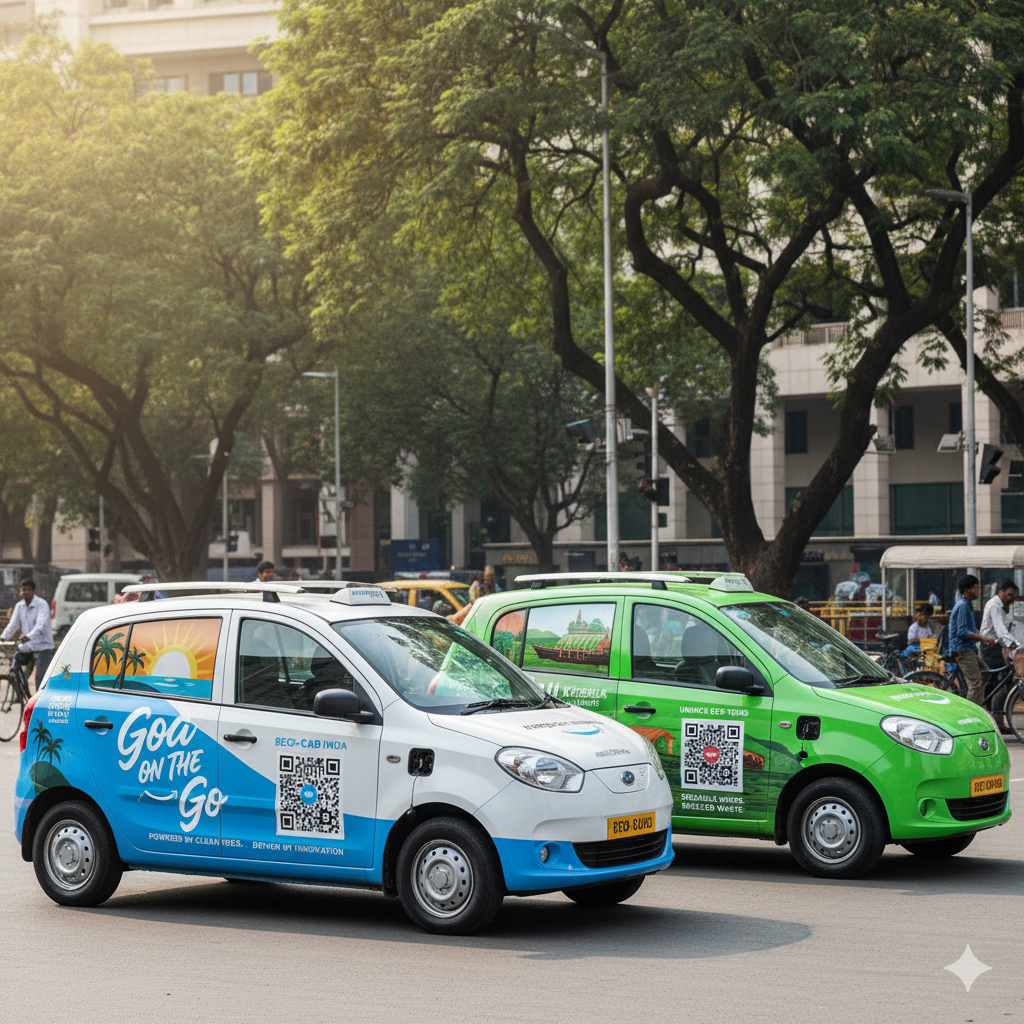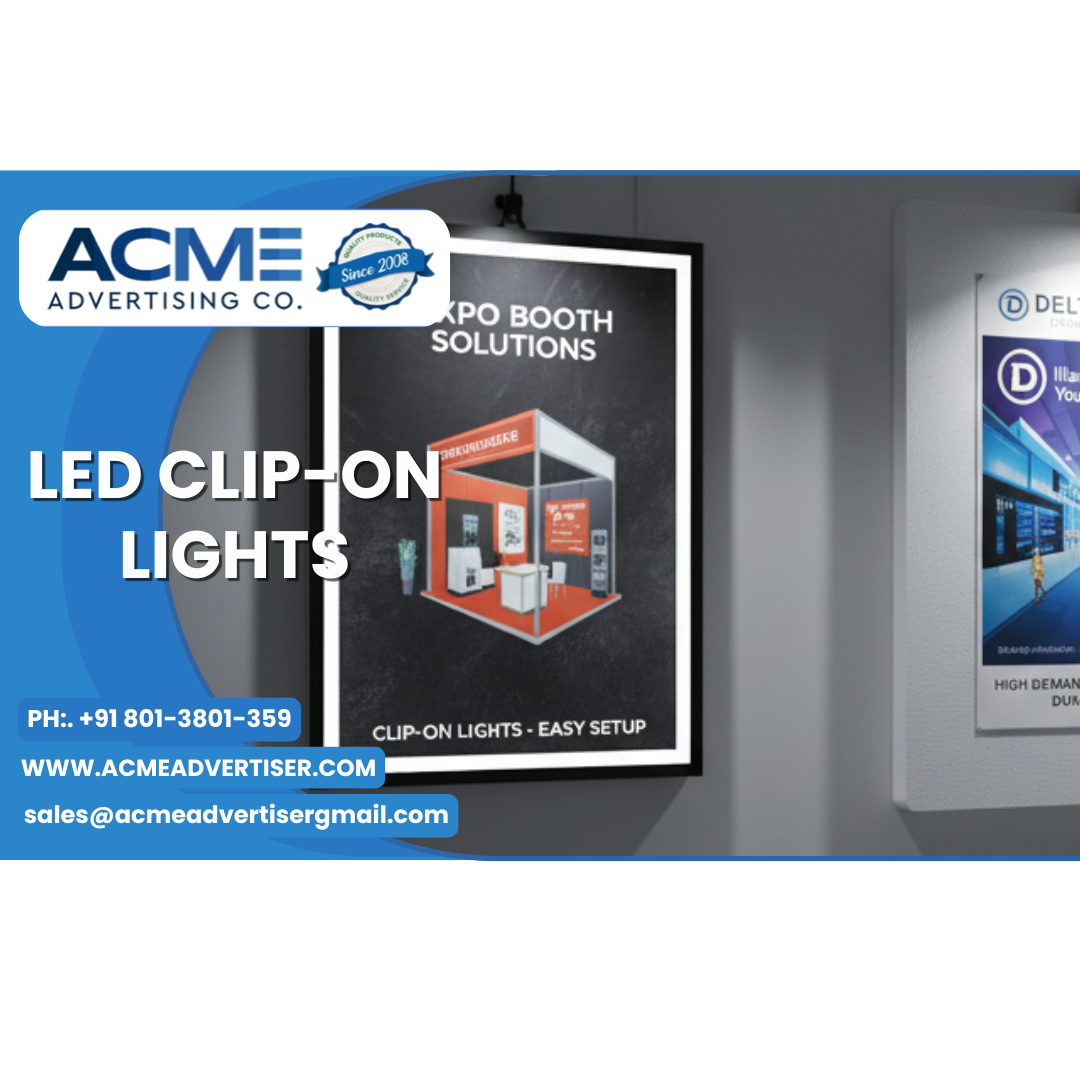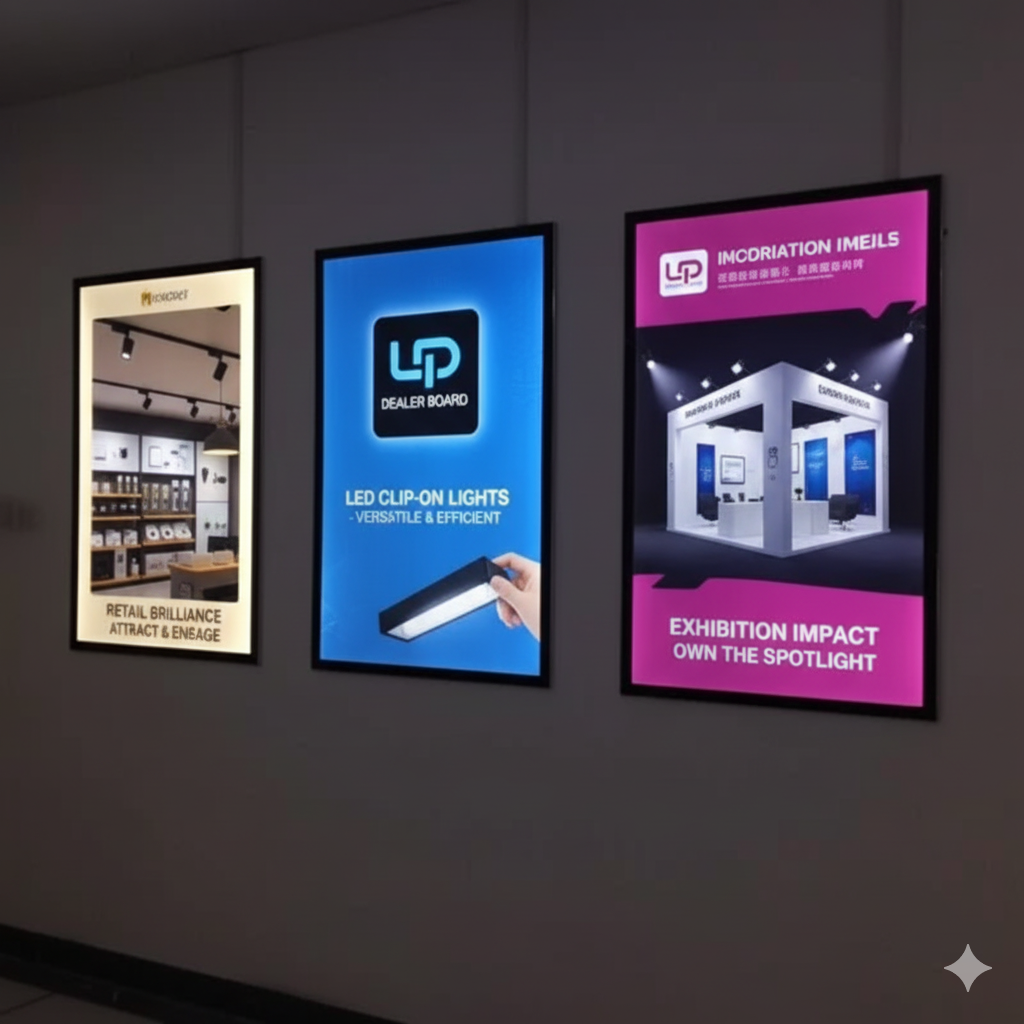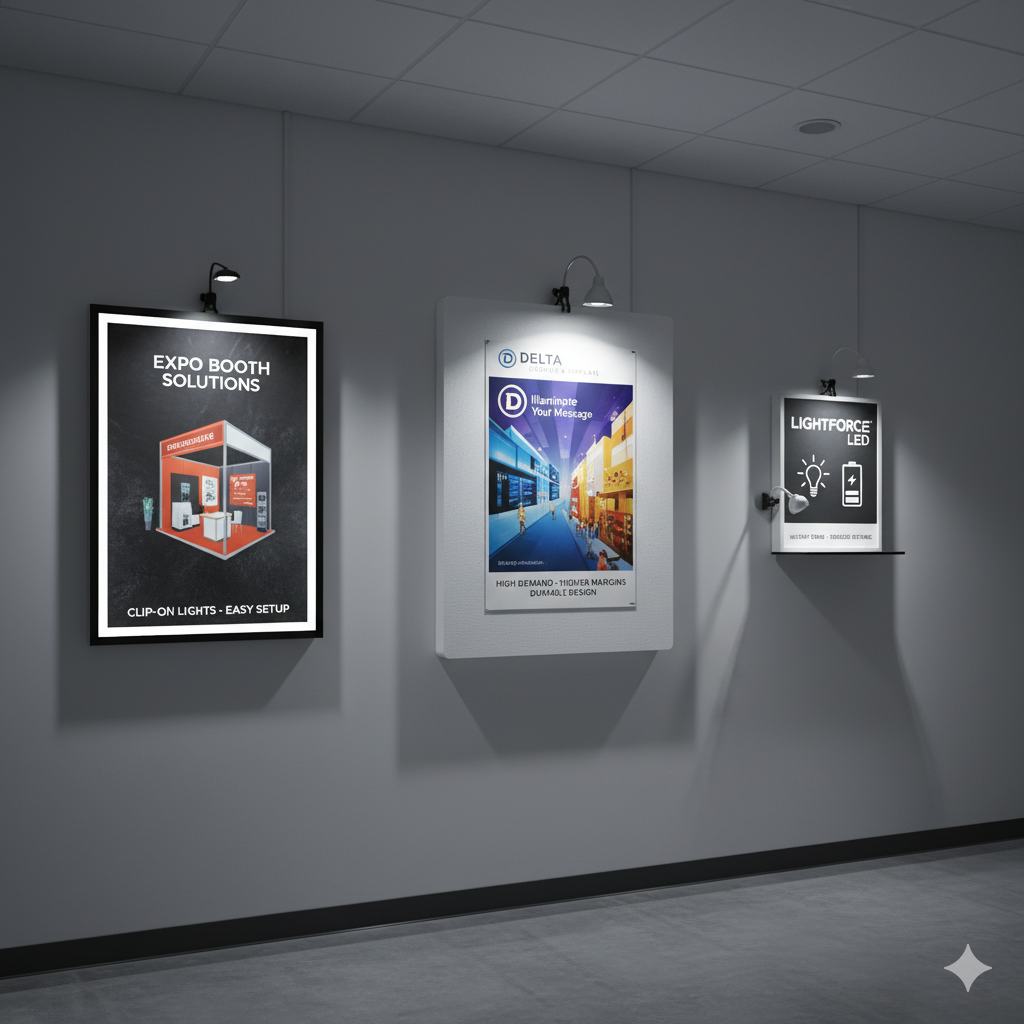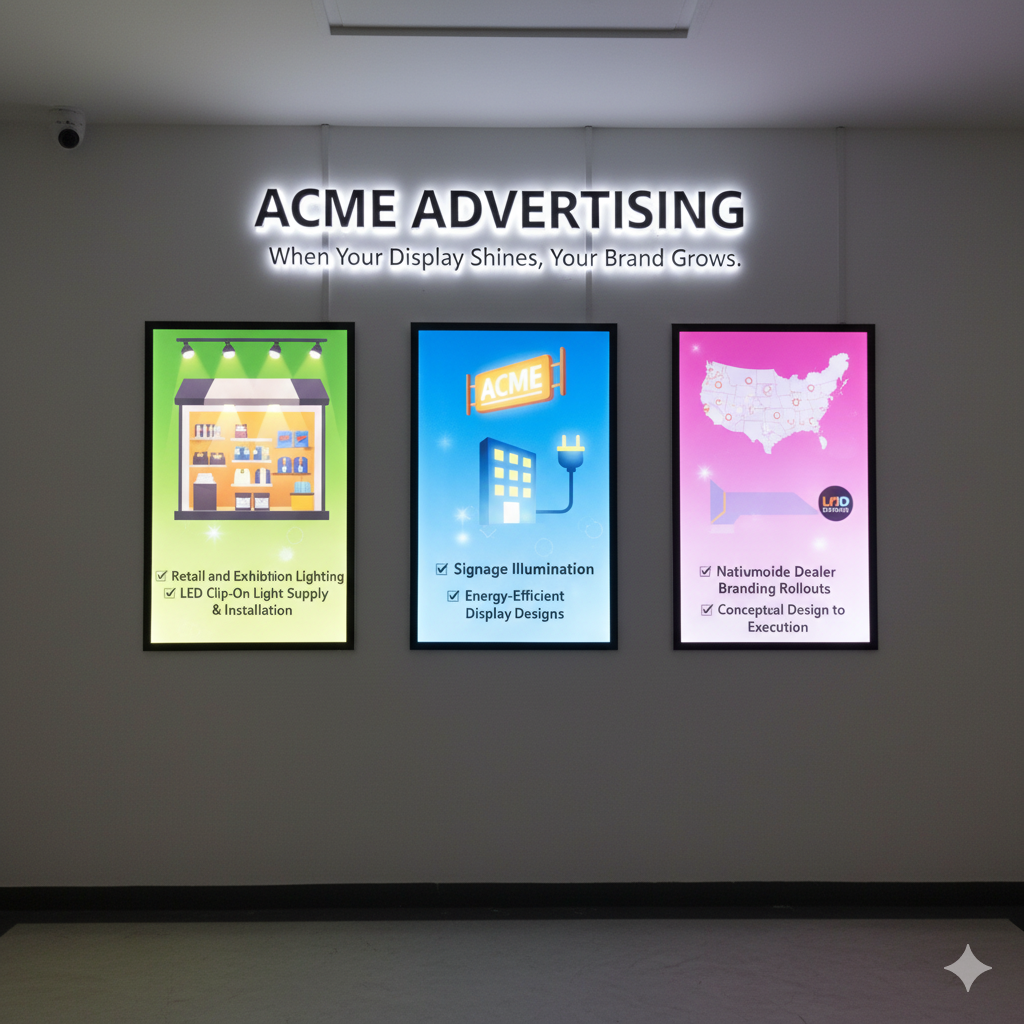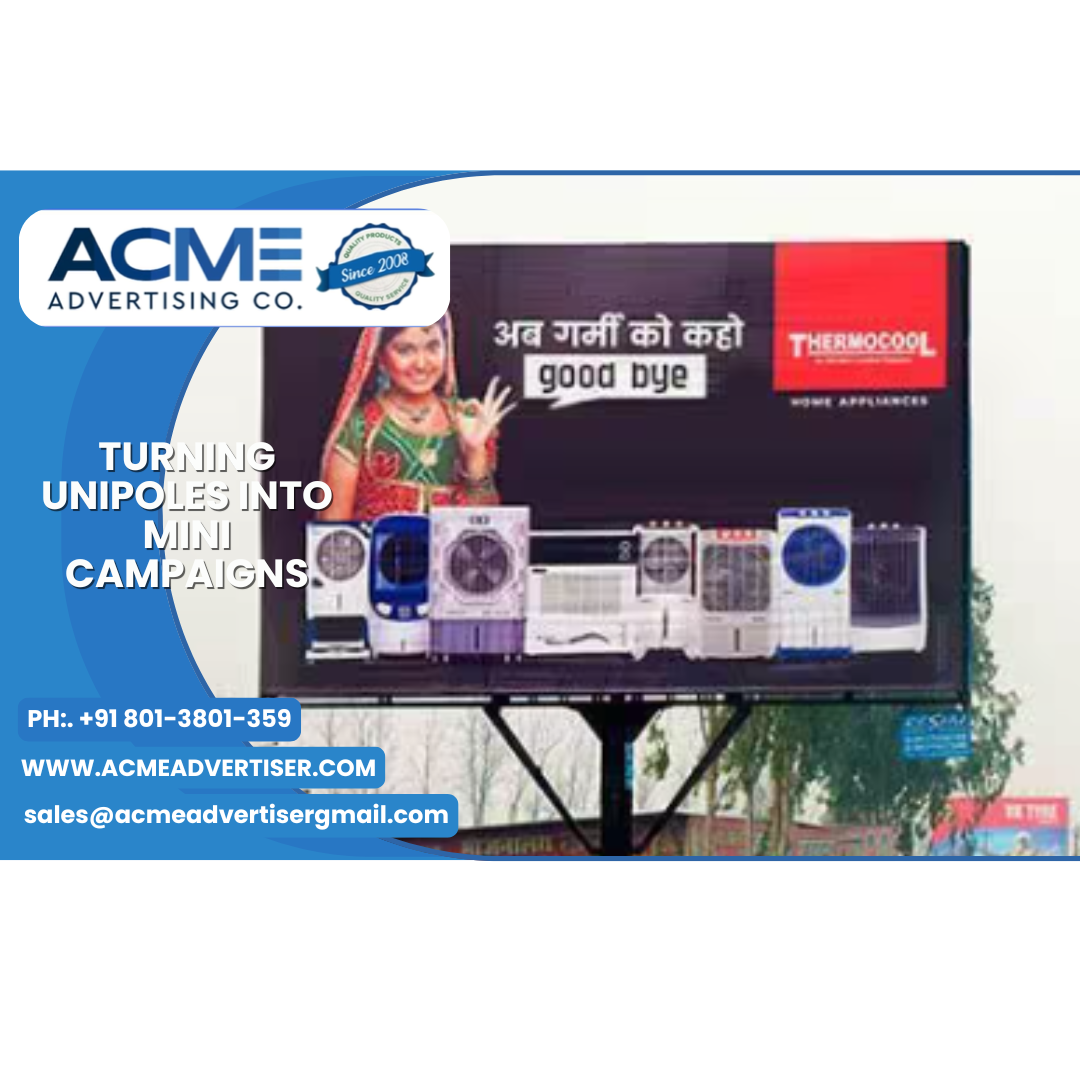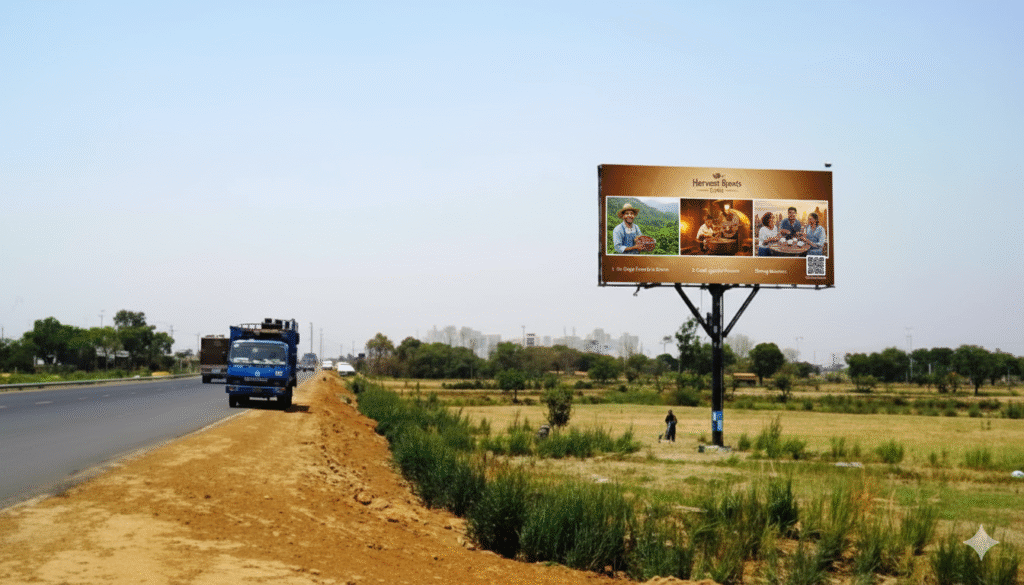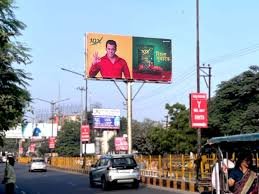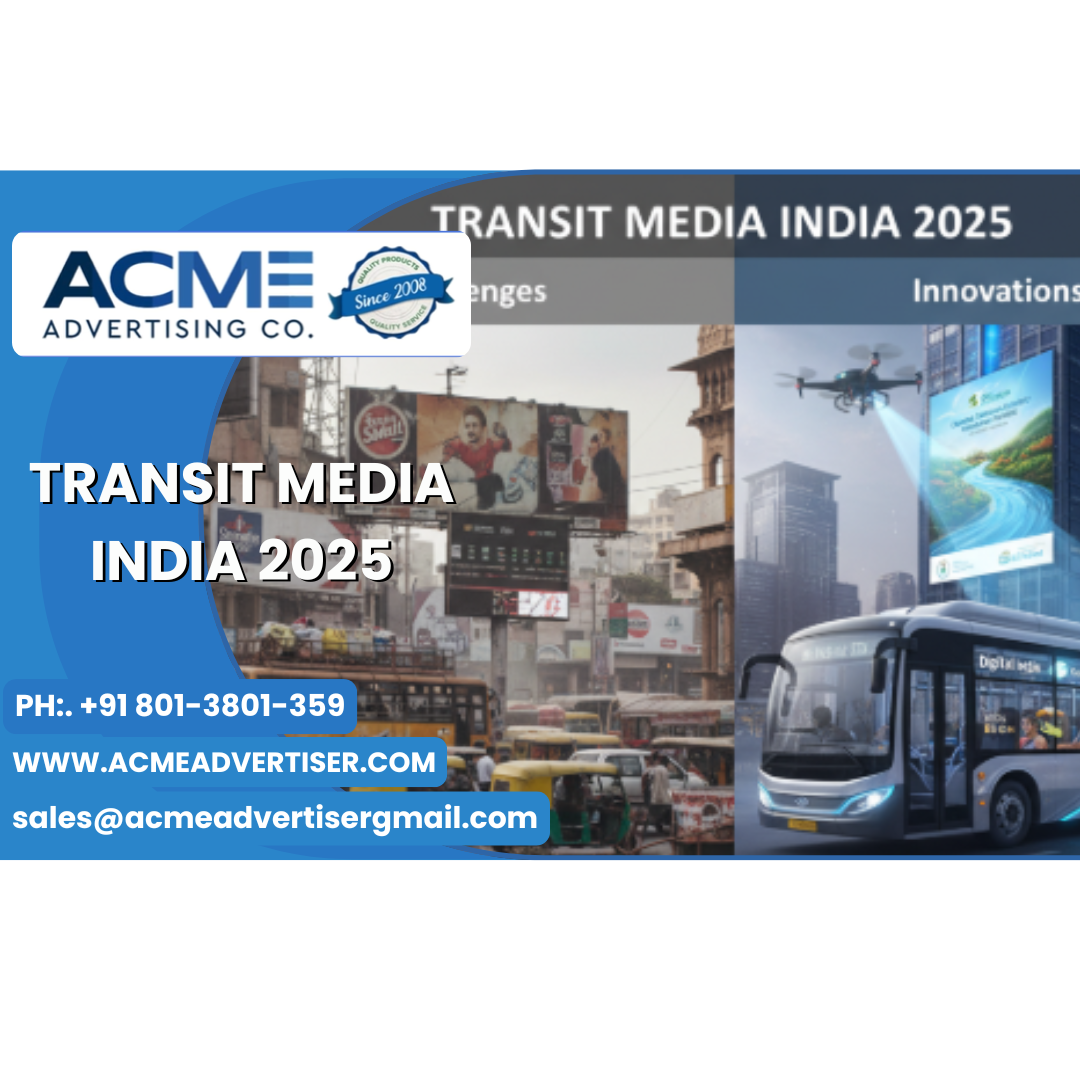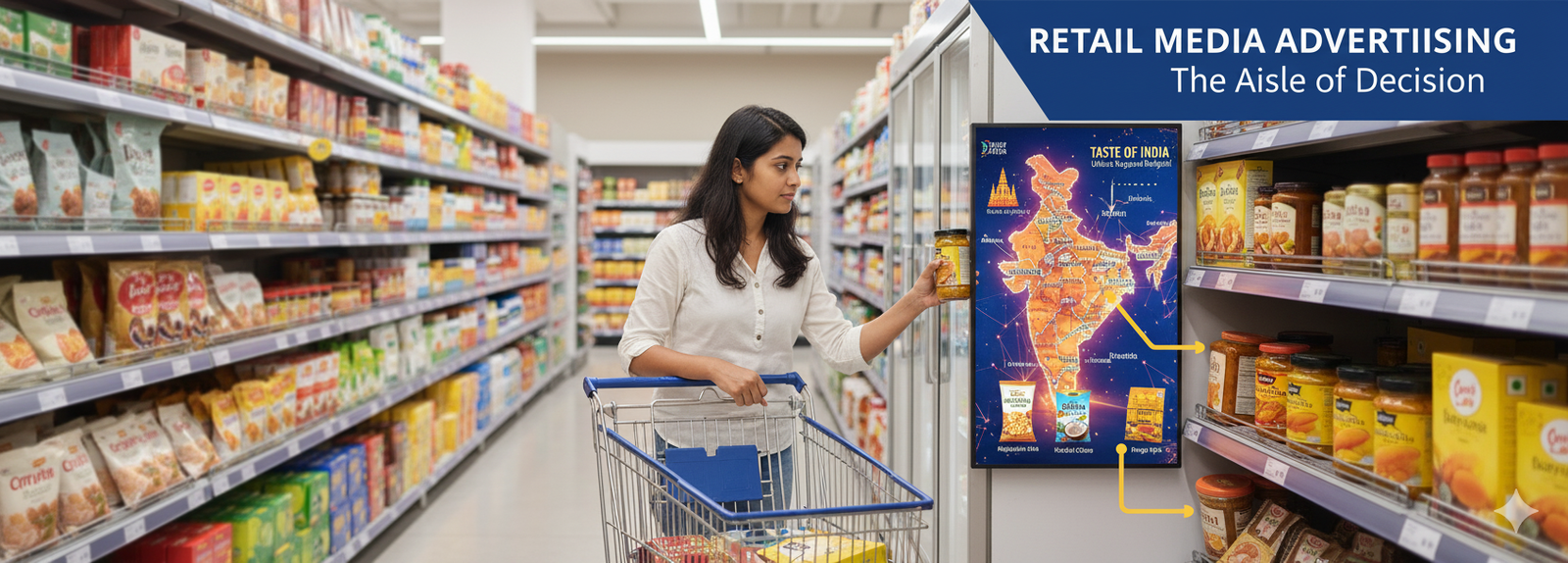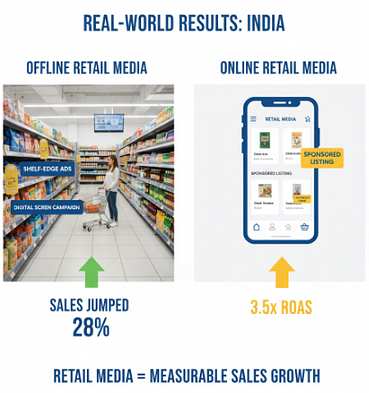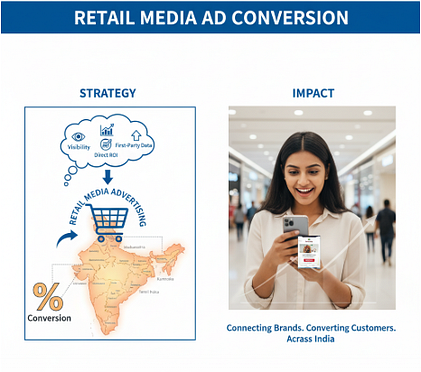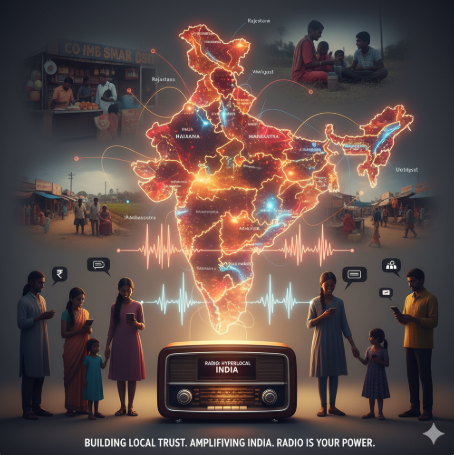Evolution of Outdoor Advertising: From 3D installations to clever real-world engagement — India’s OOH creativity is taking brand storytelling to the next level.
Table of Contents
- Introduction: The Evolution of Outdoor Advertising
- Fastrack’s Futuristic 3D OOH – When Fashion Took Flight
- Duroflex’s Festive Power Move with Virat Kohli
- CARS24’s Witty Pothole Campaign – Turning Roadblocks into Recall
- Why Creative OOH Campaigns Work
- How Acme Advertiser Is Powering the Next Wave of OOH Innovation
- Conclusion & Call to Action
1. The Evolution of Outdoor Advertising

Once upon a time, outdoor ads were static — a bold headline, a good visual, and a hope that people would notice.
Today, Out-of-Home (OOH) advertising has evolved into immersive brand storytelling. From 3D installations to AI-integrated digital billboards, the streets have become stages for creativity and connection.
And at the heart of this revolution stand brands that dare to innovate — like Fastrack, Duroflex, and CARS24 — who’ve recently redefined how India perceives outdoor branding.
Let’s explore how these campaigns set benchmarks and why Acme Advertiser is helping brands craft their own outdoor success stories across India’s urban and rural landscapes.
2. Fastrack’s Futuristic 3D OOH – When Fashion Took Flight
Fastrack recently made headlines with its 3D OOH campaign that turned heads (literally) across seven major Indian cities.
Imagine walking through Connaught Place or MG Road and suddenly seeing a hovering UFO installation promoting Fastrack’s new collection.
It wasn’t just an ad; it was an experience — one that blurred the line between art, innovation, and brand presence.
The 3D UFO installations didn’t just grab attention — they created social media waves, with users sharing pictures and videos, driving organic engagement and earned media value.
“It’s not about where you place your brand anymore — it’s about how you make people feel when they see it.”
— Marketing Head, Fastrack
With experiential campaigns like this, Acme Advertiser helps brands create high-impact 3D and LED campaigns that blend storytelling with scalability — perfect for brands looking to dominate both physical and digital spaces simultaneously.
3. Duroflex’s Festive Power Move with Virat Kohli
Festivals in India aren’t just cultural — they’re commercial catalysts.
And Duroflex knew exactly how to capture that energy.
The brand launched a festive OOH campaign for its Duropedic mattresses, featuring none other than Virat Kohli, blending aspirational appeal with mass-market relevance.
What stood out wasn’t just the face value of the celebrity, but the smart placement strategy — billboards near furniture markets, expressways, and high-footfall retail areas ensured that the brand’s visibility translated directly into purchase intent.
The result?
A surge in brand recall, social chatter, and in-store visits — all measurable through real-time data analytics and geo-targeted visibility metrics.
That’s where Acme Advertiser comes in — offering strategic media planning, targeted placement, and creative execution that make every campaign festival-ready and ROI-driven.
4. CARS24’s Witty Pothole Campaign – Turning Roadblocks into Recall
Now, here’s a campaign that literally filled the gaps.
CARS24 took an unconventional route — transforming potholes into brand placements.
Instead of viewing bad roads as obstacles, they saw them as opportunities — filling them with their logo, adding quirky messages like “Sell your car, not your soul!”
This campaign became an instant hit — not only did it resonate with the common man, but it also went viral online, generating earned PR worth millions.
It was street-smart advertising at its best — low-cost, high-engagement, and impossible to ignore.
Acme Advertiser champions the same mindset — creating OOH campaigns that spark conversation, connect emotionally, and convert awareness into measurable brand outcomes.
5. Why Creative OOH Campaigns Work
Modern OOH advertising isn’t about cluttering spaces — it’s about creating memorable experiences.
Here’s why brands are investing more in creative and localized OOH campaigns:
- 🎯 High Recall Value: 3D, LED, or witty physical installations stay longer in memory.
- 📊 Cross-Channel Amplification: When users post outdoor experiences online, your campaign lives on across platforms.
- 💡 Regional Adaptability: Campaigns can easily be localized for small towns, metros, or festive contexts.
- 🚀 ROI with Measurability: Tools like heat mapping and geo-tracking make results transparent.
- 🌐 Sustainability Edge: Digital LED boards reduce waste, aligning with eco-conscious branding.

In short, OOH isn’t just surviving the digital shift — it’s thriving alongside it, becoming a key part of omnichannel marketing strategies.
6. How Acme Advertiser Is Powering the Next Wave of OOH Innovation
At Acme Advertiser, creativity meets capability.
From concept ideation to on-ground execution, we help brands transform ordinary spaces into impactful storytelling zones.
Our key offerings include:
- 3D and LED Billboard Campaigns
- Transit & Cab Branding
- Retail & Dealer Signage
- Experiential OOH Installations
- Pan-India Media Planning
- Regional Festive Campaign Strategies
We don’t just place your ad; we make sure it connects, converts, and continues conversations.
Whether you’re a national brand or a regional business, Acme Advertiser ensures your story is seen — on roads, in minds, and across timelines.
7. Conclusion: The Future Is Bold, Bright, and Outdoors
Fastrack’s futuristic installations, Duroflex’s festive strategy, and CARS24’s creative humor prove one thing — innovation drives visibility.
And in a world full of digital noise, OOH remains the loudest whisper — authentic, local, and lasting.
With Acme Advertiser by your side, your brand doesn’t just appear outdoors — it owns the outdoors.
So, are you ready to take your brand from billboard to buzzword?
👉 Let’s collaborate today! Visit www.acmeadvertiser.com or call +91 8013801359 to plan your next unforgettable outdoor campaign.
FAQs
1. What makes OOH campaigns like Fastrack’s or CARS24’s successful?
Innovative ideas that blend creativity with relevance and location targeting drive engagement and recall.
2. Why should brands invest in 3D or digital OOH formats?
Because immersive experiences and motion-based visuals grab more attention and deliver higher ROI.
3. How can Acme Advertiser help small businesses?
By offering budget-friendly yet high-impact branding solutions tailored to regional markets and festive seasons.
4. Are OOH campaigns measurable?
Yes! With today’s analytics tools, brands can track impressions, engagement, and conversion metrics.
5. Is OOH advertising still effective in the digital era?
Absolutely — it complements digital marketing by reinforcing physical visibility and boosting online recall.
6. What are some trending OOH formats?
LED boards, 3D installations, glow signs, and creative street-level activations are leading the trend.
7. Can Acme Advertiser handle pan-India campaigns?
Yes, our team manages end-to-end campaigns across metros, tier-2, and tier-3 cities.
8. How soon can I launch my OOH campaign with Acme Advertiser?
We can help you go live within days — from strategy to installation — ensuring seamless execution.

